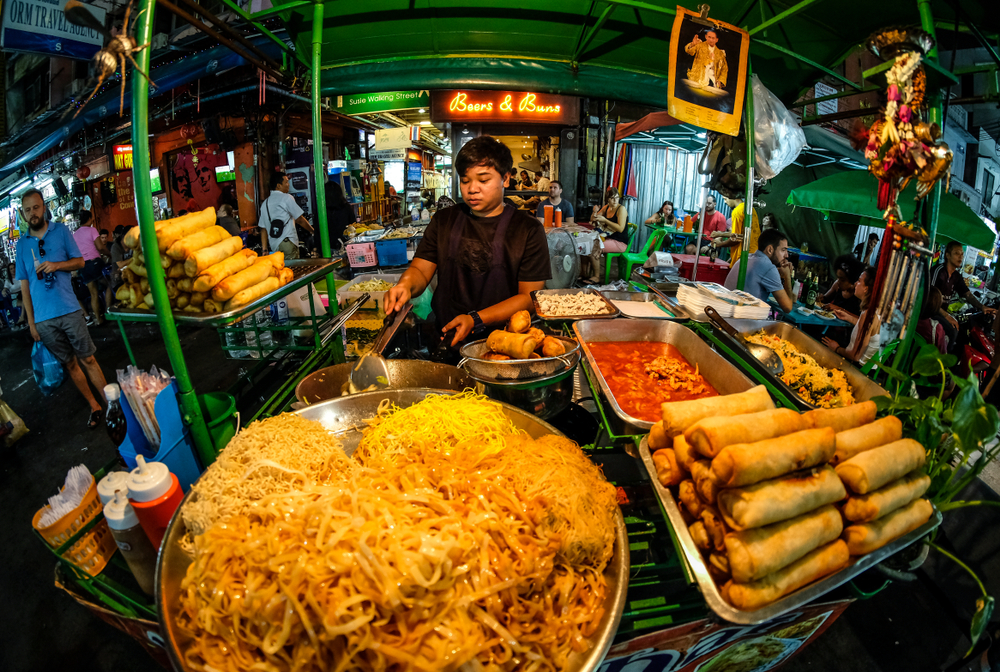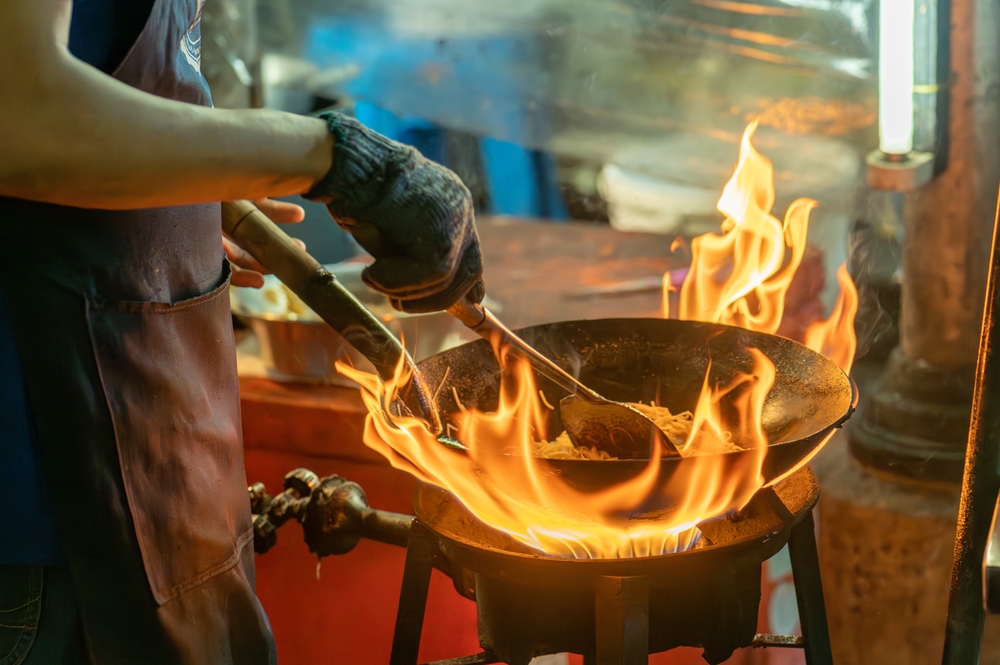The Flavors of Thai Cuisine: A Journey Through Taste, Tradition, and Culture
To understand Thailand, one must taste it.
Thai cuisine is more than a collection of dishes — it’s a dialogue between culture, climate, and community.
Every ingredient tells a story of balance: sweet and spicy, salty and sour, simple and sophisticated.
From vibrant street stalls to royal kitchens, the flavors of Thai cuisine reflect the nation’s heart — generous, diverse, and beautifully precise.

1. The Philosophy of Balance
At the core of Thai cooking lies a single philosophy: balance in all things.
Each dish harmonizes the five key tastes — spicy (ped), sweet (waan), sour (piew), salty (kem), and bitter (khom).
This culinary equilibrium mirrors Thailand’s deeper cultural ideals of harmony and mindfulness.
🪷 Insight: Thai chefs don’t measure perfection in precision — but in feeling. The right flavor, like the right life, must be balanced.

2. The Regional Diversity of Thai Cuisine
Thailand’s geography shapes its cuisine, creating a mosaic of regional flavors:
🌶️ Northern Thailand:
Milder, herbal, and earthy. Signature dishes include Khao Soi (coconut curry noodles), Sai Ua (spiced sausage), and Nam Prik Ong (tomato chili dip).
Influences from Myanmar and Laos add depth to the region’s mountain flavors.
🌾 Northeastern Thailand (Isaan):
Bold, tangy, and rustic — Isaan food is the soul of Thai street dining. Som Tam (green papaya salad), Larb (spicy minced meat salad), and Sticky Rice are daily staples, enjoyed communally.
🍋 Central Thailand:
The heartland of balance. Pad Thai, Tom Yum Goong, and Green Curry originate here — blending royal refinement with local accessibility.
🏝️ Southern Thailand:
Spicy, aromatic, and coconut-rich. Dishes like Massaman Curry, Khao Yam (rice salad), and Gaeng Tai Pla (fermented fish curry) reflect influences from Malaysia and the sea.
🌿 Taste Map: Every region tells its own story, but together they form the culinary tapestry that makes Thai food loved worldwide.
3. From Street to Sky: Thailand’s Culinary Spectrum
🍜 Street Food – The Nation’s Heartbeat
Thailand’s street food scene is legendary — a daily symphony of sizzling woks and smoky aromas.
From Bangkok’s Chinatown (Yaowarat Road) to Chiang Mai’s Night Bazaar, every corner reveals authenticity.
Must-try classics:
- Pad Kra Pao Moo (stir-fried basil pork)
- Boat Noodles (Kuay Tiew Rua)
- Mango Sticky Rice (Khao Niew Mamuang)
- Roti Sai Mai (Ayutthaya’s candy floss crepe)
💬 Tip: The busiest stalls often have the best food — locals know where the flavor lives.
🍷 Fine Dining & Michelin Stars
Thailand’s gastronomy has evolved into world-class dining, with chefs reimagining tradition through artful innovation.
Bangkok now boasts multiple Michelin-star restaurants like Sühring, R-Haan, and Le Du — each showcasing Thai ingredients with global techniques.
✨ Did you know? Thai royal cuisine dates back to the Ayutthaya era — designed to please the senses and symbolize national elegance.

4. The Art of Ingredients and Spices
Thai cuisine’s depth comes from its ingredients — each chosen for flavor, fragrance, and health.
- Lemongrass & Kaffir Lime: Refreshing and aromatic.
- Galangal & Ginger: Add warmth and complexity.
- Thai Basil & Coriander: Provide brightness and depth.
- Fish Sauce & Shrimp Paste: Deliver umami and soul.
🌶️ Cultural Note: Thai spice levels are personal — when you say “mai ped” (not spicy), expect “medium” by Thai standards.
5. Dining as a Reflection of Thai Culture
Meals in Thailand are meant to be shared — symbolizing unity, respect, and community.
Food connects families, celebrates holidays, and marks important rituals like Songkran (Thai New Year) and Loy Krathong.
Utensils, too, reflect Thai elegance — meals are eaten with spoon and fork, never knife, emphasizing gentleness and precision.
🍽️ Etiquette Tip: Wait for the eldest person at the table to start before you begin. It’s a gesture of respect rooted in Thai tradition.
6. Sweet Endings: Thai Desserts & Drinks
Thai desserts are delicate blends of texture and aroma — from tropical fruits to jasmine-scented syrups.
- Khanom Chan (layered jelly)
- Tub Tim Grob (red ruby water chestnuts in coconut milk)
- Lod Chong (pandan noodles with palm sugar)
For drinks, nothing beats Thai Iced Tea (Cha Yen) or fresh coconut water — timeless companions to Thailand’s tropical warmth.

7. Thai Cuisine Today: A Global Legacy
Thai food has become one of the world’s most recognized cuisines, but its soul remains unchanged — humble, creative, and rooted in balance.
From Bangkok to New York, every Thai restaurant carries a piece of home: the warmth of hospitality and the pursuit of harmony through flavor.
🌍 In essence: Thai cuisine isn’t just eaten — it’s experienced.
🌺 Final Thoughts
Thai cuisine is a celebration — of taste, togetherness, and tradition.
It’s where the past meets the present, where street food and royal recipes share the same heartbeat.
Whether you’re exploring night markets or fine dining terraces, every bite in Thailand tells the story of a nation that cooks with love, spirit, and grace.





.png)











